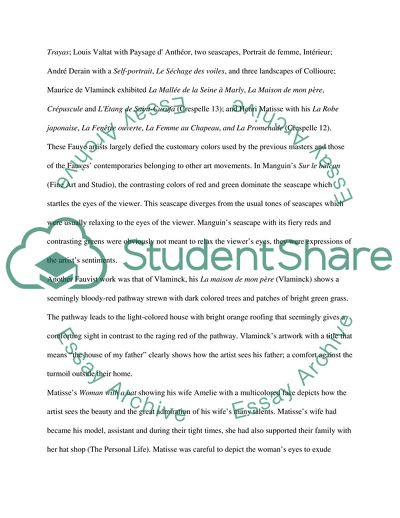Cite this document
(Fauvism Essay Example | Topics and Well Written Essays - 1250 words, n.d.)
Fauvism Essay Example | Topics and Well Written Essays - 1250 words. https://studentshare.org/visual-arts-film-studies/1718784-choose-one-of-these-questions-below
Fauvism Essay Example | Topics and Well Written Essays - 1250 words. https://studentshare.org/visual-arts-film-studies/1718784-choose-one-of-these-questions-below
(Fauvism Essay Example | Topics and Well Written Essays - 1250 Words)
Fauvism Essay Example | Topics and Well Written Essays - 1250 Words. https://studentshare.org/visual-arts-film-studies/1718784-choose-one-of-these-questions-below.
Fauvism Essay Example | Topics and Well Written Essays - 1250 Words. https://studentshare.org/visual-arts-film-studies/1718784-choose-one-of-these-questions-below.
“Fauvism Essay Example | Topics and Well Written Essays - 1250 Words”. https://studentshare.org/visual-arts-film-studies/1718784-choose-one-of-these-questions-below.


